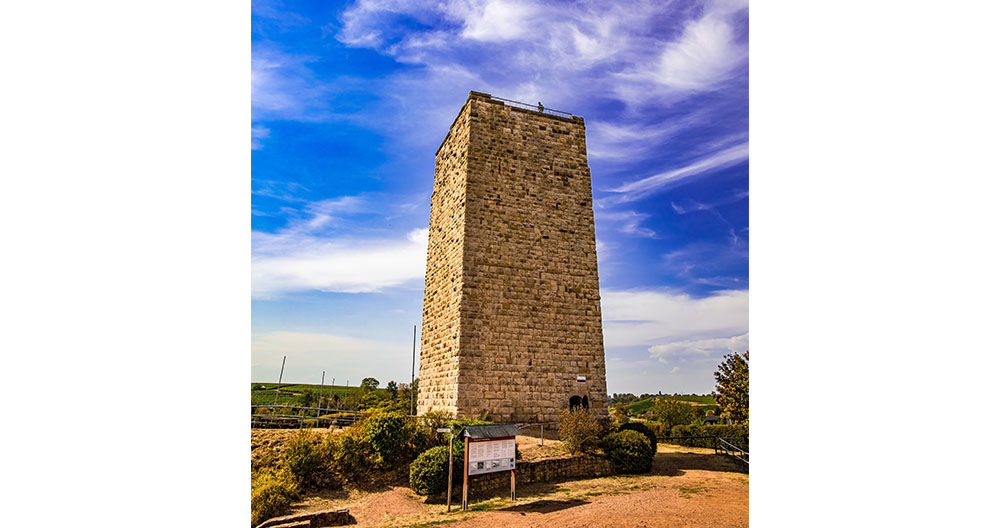
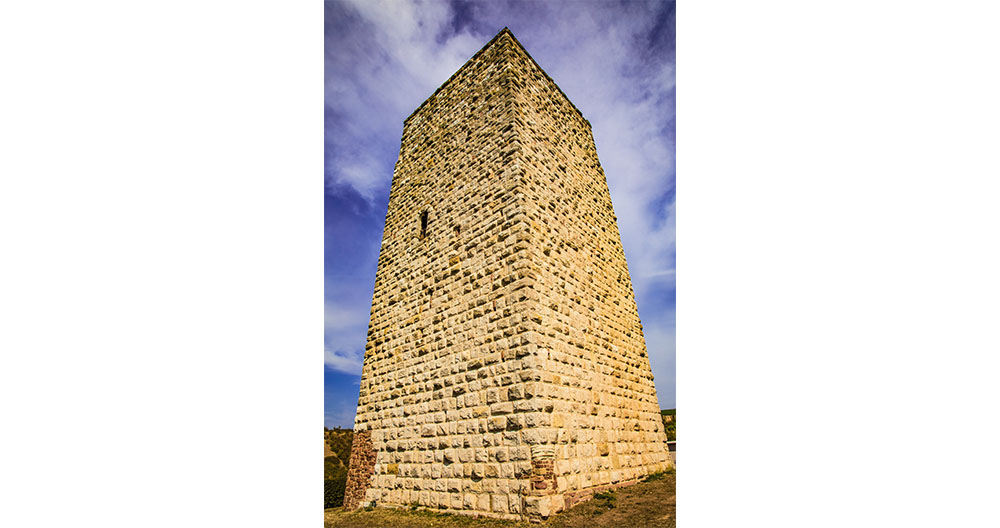
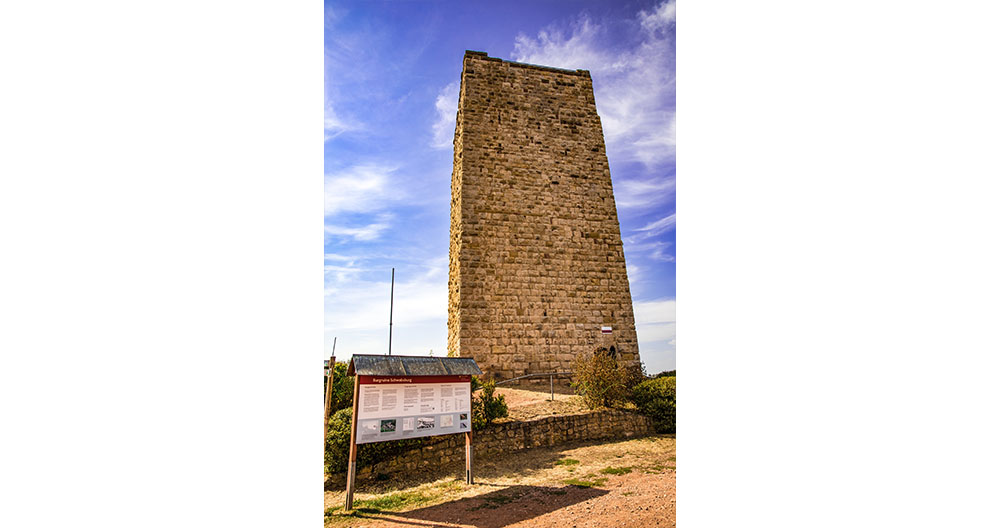
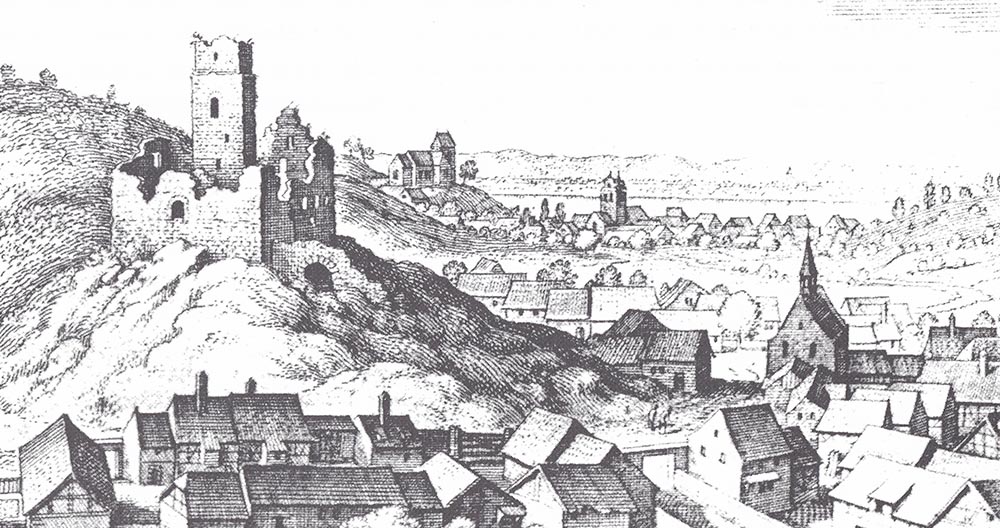
Back in the 13th century, Hohenstaufen King Friedrich II, grandson of the legendary Emperor Friedrich “Red Beard” Barbarossa, ruled the Holy Roman Empire.
An empire so big that it extends from Germany to southern Italy. Friedrich demonstrates his power and the size of his empire by having many castles built in a very specific architecture. Whether in Sicily or Germany: his buildings are of similar quality and style and mostly built in impressive blocks of stone. Exactly at this time the Schwabsburg castle was built here. Old documents not only speak of a castle, but even of a “Schwabsburg palace”. Hans-Peter Hexemer of Nierstein‘s History Society:
It used to be a palace-like complex. There exist drawings that reconstruct this complex, and you can see that the whole plateau was covered with buildings around this tower. And the palace complex was certainly used that way at the time. We have to imagine a big, mighty, important building; we cannot just look at the castle tower, which basically represents maybe 10% only of the complex.
Over the centuries, the castle often changed hands, was pledged and enfeoffed, inherited and exchanged, as it was common in the Middle Ages. In the late Middle Ages there were also connections to the Landskron Castle in Oppenheim, with which one could communicate via optical signals via Nierstein’s Warttum tower.
When and why the castle was abandoned is no longer known today. On a copper engraving by Matthäus Merian published in 1645 Schwabsburg Castle is already depicted as a ruin.
At some point, such buildings also fell into disrepair or were used by the people who lived around them to procure building materials for themselves. If you take a closer look around Schwabsburg, you will most probably find the one or the other stone of the castle a secular building.
Well one could say that so the castle is owned by the people today – a stonely democratization, so to speak. And that can’t be bad at all, can it?
If you would like to get to know more of Schwabsburg’s historical places, why not take our audio guided tour through Schwabsburg! It starts right here! Right now!
Why did Schwabsburg’s citizens use to carry their food through the streets? Why was Schwabsburg important for the Carthusian monastery in Mainz? And where did the water mill rattle by the rushing brook? Come with us! We will tell you on the way! The map at the bottom of the website on your smartphone shows you where to go! For our short trip through Schwabsburg with five stops you‘ll need about 45 minutes by foot.
By the way, there are also interesting historic tours through Nierstein! The main tour begins at Nierstein’s market square which is definitely worth a visit.





Back in the 13th century, Hohenstaufen King Friedrich II, grandson of the legendary Emperor Friedrich “Red Beard” Barbarossa, ruled the Holy Roman Empire.
An empire so big that it extends from Germany to southern Italy. Friedrich demonstrates his power and the size of his empire by having many castles built in a very specific architecture. Whether in Sicily or Germany: his buildings are of similar quality and style and mostly built in impressive blocks of stone. Exactly at this time the Schwabsburg castle was built here. Old documents not only speak of a castle, but even of a “Schwabsburg palace”. Hans-Peter Hexemer of Nierstein‘s History Society:
It used to be a palace-like complex. There exist drawings that reconstruct this complex, and you can see that the whole plateau was covered with buildings around this tower. And the palace complex was certainly used that way at the time. We have to imagine a big, mighty, important building; we cannot just look at the castle tower, which basically represents maybe 10% only of the complex.
Over the centuries, the castle often changed hands, was pledged and enfeoffed, inherited and exchanged, as it was common in the Middle Ages. In the late Middle Ages there were also connections to the Landskron Castle in Oppenheim, with which one could communicate via optical signals via Nierstein’s Warttum tower.
When and why the castle was abandoned is no longer known today. On a copper engraving by Matthäus Merian published in 1645 Schwabsburg Castle is already depicted as a ruin.
At some point, such buildings also fell into disrepair or were used by the people who lived around them to procure building materials for themselves. If you take a closer look around Schwabsburg, you will most probably find the one or the other stone of the castle a secular building.
Well one could say that so the castle is owned by the people today – a stonely democratization, so to speak. And that can’t be bad at all, can it?
If you would like to get to know more of Schwabsburg’s historical places, why not take our audio guided tour through Schwabsburg! It starts right here! Right now!
Why did Schwabsburg’s citizens use to carry their food through the streets? Why was Schwabsburg important for the Carthusian monastery in Mainz? And where did the water mill rattle by the rushing brook? Come with us! We will tell you on the way! The map at the bottom of the website on your smartphone shows you where to go! For our short trip through Schwabsburg with five stops you‘ll need about 45 minutes by foot.
By the way, there are also interesting historic tours through Nierstein! The main tour begins at Nierstein’s market square which is definitely worth a visit.


